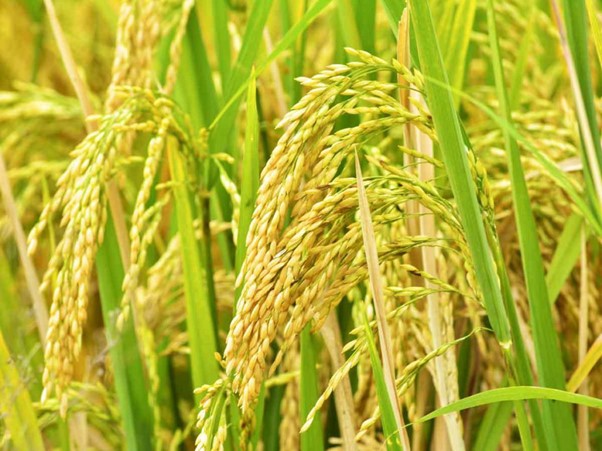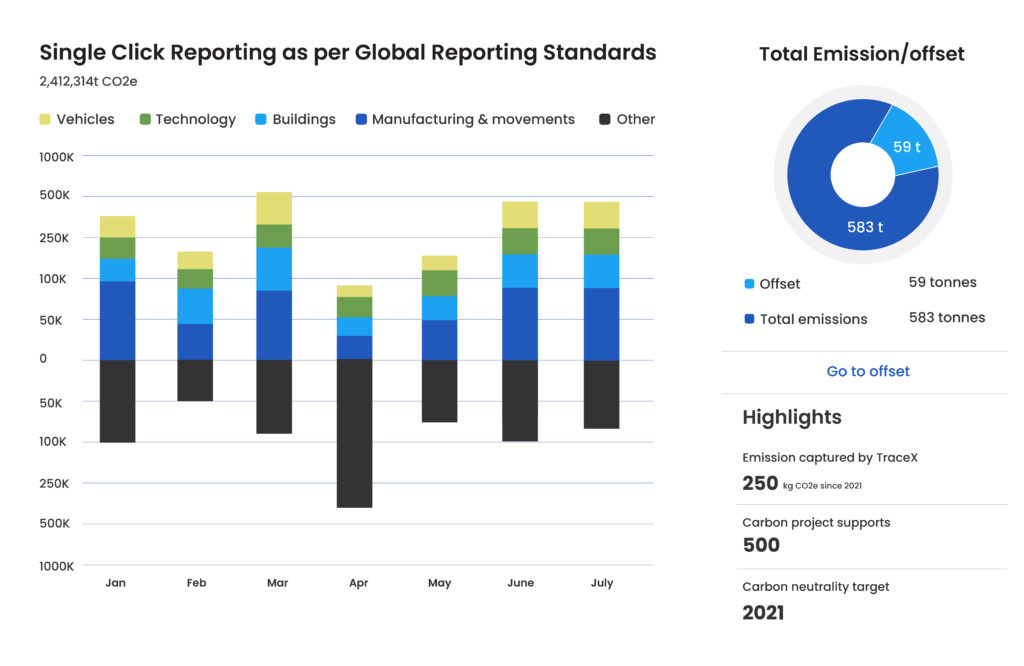Contact: +91 99725 24322 |
Menu
Menu
Dive into the success story of a Basmati Rice Production, exploring how traceability solutions revolutionized their supply chain, reduced environmental impact, and set new standards for responsible practices.

Problem
Solution
TraceX’s blockchain-powered traceability solution addresses these challenges by providing a single connected platform for the entire rice supply chain. Features include data collection, crop recommendations, digitization of activities, and tracking field implementation performance. The post-harvest solution streamlines both procurement and process workflows ensuring end to end traceability of the rice supply chain.
Result
“We were able to connect our complete ecosystem by partnering with TraceX to implement a blockchain-powered digital agricultural platform. We were able to track data in structured forms as well as receive real-time updates on our farms, which really helped us in taking right decision at right time.”
Global rice consumption has been slowly increasing over the years. The tiny grain bears quite a large responsibility, with it being the staple food of more than half of the world’s population – more than 3.5 billion people depend on rice for more than 20% of their daily calories. Global consumption is driven by population and economic growth, especially in many Asian and African countries, with China and India, the world’s most populous countries consuming the most.
Rice is one of India’s largest agri-export commodities. This means that huge portions of Indian farmlands are dedicated to growing it. This comes at a cost. Rice needs huge volumes of water to grow: 1 ton of rice requires 3000 liters throughout its growth cycle. This puts a huge stress on the limited water resources that we have access to. Apart from this, rice is a substantial contributor to global warming. According to WRI, growing rice produces methane, that is more than 30 times as potent as carbon dioxide.
The Sustainable Rice Platform (SRP) is a multi-stakeholder international alliance with over 100 institutional members from public, private, research, civil society, and the financial sector. SRP works with partners to transform the global rice sector by promoting resource-use efficiency and climate change resilience, both on-farm and throughout the rice value chain.
A major agribusiness exporter spearheaded the digitization of its Sustainable Rice Project, with a focus on Basmati paddy cultivation across regions like Madlauda, Safidon in Haryana. Collaborating with 32 farmer groups, comprising around 200 farmers, the project aimed to track 3000MT of Basmati paddy. The primary goal was to streamline the entire supply chain, leveraging the TraceX solutions, by digitizing cultivation practices, implementing modern agricultural techniques, and optimizing resource utilization.
TraceX empowers complete transparency and traceability across the rice supply chain, ensuring every step, from “seed to shelf,” is documented and accountable.
Farmer Onboarding: Farmers are registered on TraceX system with unique IDs, their farm locations geo-tagged.
Land Preparation: Field supervisor and farmers use the mobile app to record the various land preparation activities, the dates, the inputs used and photos for verification. The data is stored against the specific farm plots and farmer IDs.
Crop Management: The Package of Practices are configured, that includes seed sowing and planting dates, fertilizer applications, pesticide/herbicide applications, irrigation methods and water usage and disease or pest observations. Weather and Soil data can also be captured into the system with external integrations.
Sampling & Harvesting: The crop health is recorded with photos. Harvest dates and yield estimates are calculated and harvest dashboards are built for generating data analytics for insights and decision making. Batch IDs are allocated to harvests collected.

Streamlined Procurement with TraceX
Procurement managers receive lists detailing farmer information and the required crops. These lists are seamlessly imported through the TraceX platform or existing system integrations. Mandi managers or Procurement agents utilize the TraceX mobile app to connect with farmers and record transaction details like farmer ID, batch ID, crop quality, quantity, and agreed-upon price. A unique QR code is generated for each specific procurement batch. Unique QR code tags are printed and attached to individual paddy bags, linking them to the specific batch and pre-harvest data, ensuring complete traceability throughout the process. Each bag’s ID may be scanned and linked with the larger batch, ensuring complete traceability. Bags are received at the warehouse and their QR codes scanned. Inventory system is automatically updated, reflecting incoming stock, lot origins, and relevant quality parameters. When fulfilling a sales order, the QR codes of outgoing bags are scanned for dispatch. This can be integrated with GPS tracking devices on trucks to monitor shipments in real-time.

Batch IDs link crops to their pre-harvest data, while quality checks and processing steps are meticulously documented in the TraceX app. New QR codes track split batches and processing history. Milling and packing are monitored, with inventory updates reflecting stock levels. Finally, dispatched bags are scanned, potentially tracked by GPS, and linked to sales orders, allowing consumers to access the story behind their purchase. TraceX empowers transparency and traceability, fostering trust throughout the food supply chain.
Linking Harvest to Pre-Harvest Data: Upon arrival of the harvested crop (e.g., paddy from the field), the Batch ID or Farmer ID is scanned. The system pulls in all pre-harvest data associated with that batch or farmer – soil conditions, inputs, crop variety, etc. This creates the foundation for complete traceability.
Quality Control & Grading: The Quality Supervisor assesses the crop against defined quality parameters (moisture, foreign matter, grain size, etc.). The Supervisor inputs quality test results and assigns a grade. Photos may be uploaded for verification.
Batch Processing and Tagging: Crop batch undergoes specific processing steps as needed (drying, cleaning, sorting, etc.).Each step can be logged in TraceX. If the batch is split or combined with others, new unique batch IDs are generated to maintain traceability. After a processing step, a new QR code might be printed, linking it back to both the original harvest data and the processing history.
Milling & Packing: The batch enters milling processes. Yield ratios and quality after milling are recorded in TraceX. Final packing occurs, potentially with separate bag-level QR codes for finer tracking. The Inventory Module updates stock levels and locations of different products (e.g., broken rice, premium basmati, etc.).
Warehouse & Dispatch: Rice bags with QR codes are stored, ready for sale. Upon order fulfilment, bags are scanned for dispatch, and GPS tracking may monitor the delivery route.
Sales Order Completion: All traceability information, from farm to warehouse or retailer, is associated with the specific sales order. The final buyer can scan the QR code and access some or all of the accumulated traceability data, depending on company sharing protocols.

Ultimately, TraceX provides a comprehensive solution for agricultural stakeholders, from farmers and procurement agents to processors and consumers. By ensuring transparency and traceability throughout the supply chain, TraceX empowers a more sustainable, ethical, and informed agricultural future.

Conclusion
The use of traceability solutions for sustainable basmati rice production highlights the importance of incorporating sustainable practices in the production of agriculture commodities. The company’s commitment to sustainable production through the use of environmentally friendly methods such as reducing wate usage and adopting fair labor practices not only benefits the environment and the community but also enhances the quality of the product.
The implementation of blockchain traceability solutions promotes transparency and accountability throughout the supply chain ensuring the safety of the end product. These solutions help companies to balance profitability with social and environmental responsibility, contributing to a sustainable future.
Transparency, Trust and Success for your Climate Journey.

Copyright © 2024 Blockchain for Food Safety, Traceability and Supplychain Transparency
We use cookies on our website to give you the most relevant experience by remembering your preferences and repeat visits. By clicking “Accept All”, you consent to the use of ALL the cookies. However, you may visit "Cookie Settings" to provide a controlled consent.
| Cookie | Duration | Description |
|---|---|---|
| cookielawinfo-checkbox-analytics | 11 months | This cookie is set by GDPR Cookie Consent plugin. The cookie is used to store the user consent for the cookies in the category "Analytics". |
| cookielawinfo-checkbox-functional | 11 months | The cookie is set by GDPR cookie consent to record the user consent for the cookies in the category "Functional". |
| cookielawinfo-checkbox-necessary | 11 months | This cookie is set by GDPR Cookie Consent plugin. The cookies is used to store the user consent for the cookies in the category "Necessary". |
| cookielawinfo-checkbox-others | 11 months | This cookie is set by GDPR Cookie Consent plugin. The cookie is used to store the user consent for the cookies in the category "Other. |
| cookielawinfo-checkbox-performance | 11 months | This cookie is set by GDPR Cookie Consent plugin. The cookie is used to store the user consent for the cookies in the category "Performance". |
| viewed_cookie_policy | 11 months | The cookie is set by the GDPR Cookie Consent plugin and is used to store whether or not user has consented to the use of cookies. It does not store any personal data. |
WhatsApp us